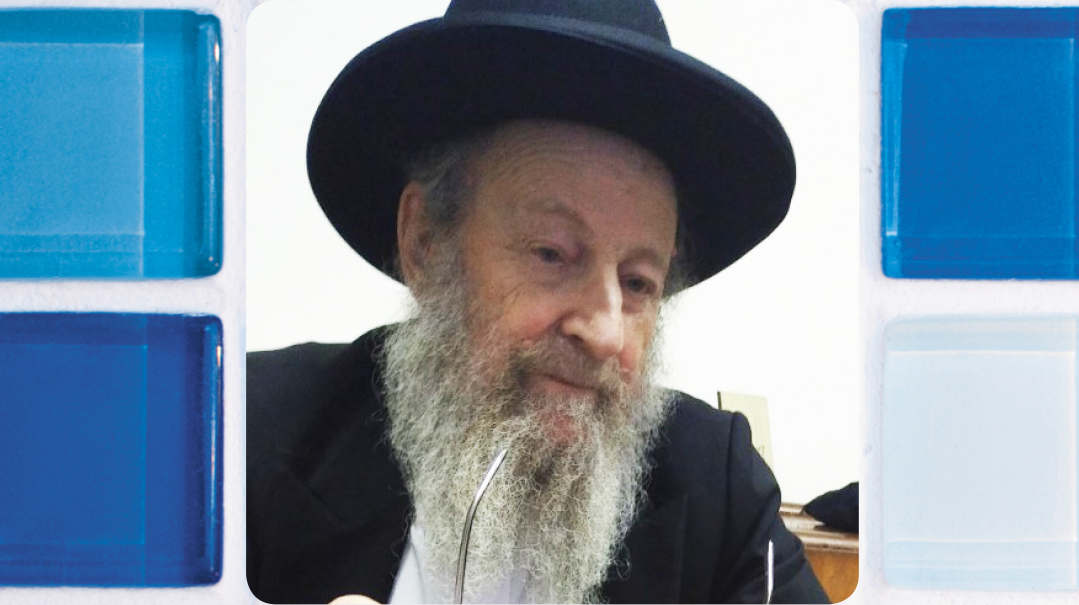Total Immersion
| June 22, 2021Rabbi Meir Posen has been traversing the length and breadth of the globe to build and supervise mikvaos for over half a century

Photos: Personal archives
The year was 1980, and although by the end of the decade the oppressive Communist Soviet Union would dissolve, travel to Russia, especially to teach Torah in secret, was still a dangerous proposition. But that didn’t stop an active teshuvah underground, boosted in large part by the efforts of the Lubavitcher Rebbe, who would send pairs of shluchim to Russia on a regular basis. Rabbi Meir Posen, a mikveh expert who lived in Stamford Hill, London, was asked by Chabad emissaries, at the behest of the Rebbe, if he’d be willing to travel to the USSR and check the mikvaos in various cities. At the time, there was only one functioning mikveh in Moscow, in the main shul known as the Choral Synagogue on Archipova Street.
Such a trip, though, was fraught with risk and, understandably, Rabbi Posen’s wife was fearful. And so, he sent someone to Rav Elyashiv for advice.
“Don’t go,” paskened the gadol.
“So, who should go?” he asked.
“Someone who’s not worried about his personal safety,” was the Rav’s reply.
Rabbi Posen was no stranger to making sacrifices for Yiddishkeit, but he wasn’t about to upset his wife over real safety issues.
A few years later, in 1986, he attended the levayah of Rav Yaakov Landau, chief rabbi of Bnei Brak and fellow halachic authority on mikvaos. In the 1920s, Rav Landau built the mikveh for the Rebbe Rashab of Lubavitch in Rostov, the European center for Chabad at the end of World War I.
After the levayah, Rabbi Posen went to visit Rav Elyashiv. As he entered, Rav Elyashiv greeted him with, “Now you can convince your wife that it’s okay to go.” By this time, the Soviet Union was under the control of Mikhail Gorbachev and the situation had eased somewhat as the country was moving toward perestroika. Therefore, the Chabad chassidim felt it a good time to build a mikveh in Moscow’s chassidic shul, the Marina Roscha synagogue.
Rabbi Posen was preparing for his trip, but then, in a freak accident while waiting for a bus home, a blast of wind blew Rabbi Posen’s slight frame into the street, leaving him briefly hospitalized.
“The following Monday,” Rabbi Posen relates from his home in Kiryat Sefer, where he moved from London in 1995 and still travels back and forth, maintaining both homes, “Rav Elyashiv came to visit me in Hadassah Har Hatzofim hospital. ‘Ois Moskowa,’ he told me. Moscow is out.”
Instead, Rabbi Posen drew up the plans and gave them to another mikveh expert, Rabbi Gershon Grossbaum of St. Paul, Minnesota, who had built many mikvaos in outlying areas. Rabbi Grossbaum arrived in Moscow in the summer of that year, just before Rosh Chodesh Av, and although Jews generally refrain from building during the first nine days of Av, the chassidim received a message from the Rebbe, telling them to hurry and try to complete the building of the mikveh during this period. Soon, they realized why: The KGB had learned of the plans to build the mikveh, and had therefore set up a lookout across from the shul for any suspicious activity. Yet it just so happened that all those agents were given their week-long summer vacation specifically during the Nine Days.
One of the well-connected chassidim, Sasha Lukatsky, took charge of the project, hiring black-market builders to quickly complete the structure, but when the agents returned and saw what was done in their absence, the government immediately ordered its demolition.
The chassidim threatened to lie down in front of the entrance and physically block the bulldozers with their bodies, which was just a short-lived stop-gap measure. In the middle of the night, agents broke into the shul, smashed the pipes, filled the mikveh with cement and covered it with parquet flooring.
When the Rebbe heard what happened, however, he decided against making a public issue out of it, which he felt would just entrench the Soviet officials in their opposing position, and the mikveh would never be rebuilt. He did agree to have it put before several US congressional officials who were involved in the human rights struggle in the Soviet Union though, and the following year, the mikveh was rebuilt — by the Soviet government itself.
By then, Rabbi Posen too stepped behind the Iron Curtain to advance his mission of checking old mikvaos.
(Over the years, the Marina Rosha shul suffered several additional close calls. It was burned down in an apparent arson attack in 1993, rebuilt, and then badly damaged in a targeted bombing in 1996. Today, though, it’s a bustling, state-of-the-art chassidic center with shuls, classrooms, a restaurant, community center — and an opulent, top-tier renovated mikveh, supervised by Rabbi Posen.)
Oops! We could not locate your form.













